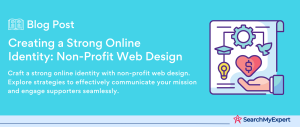What is E-commerce Web Design?
E-commerce web design is a specialized field of web design focused on creating online storefronts for businesses. It encompasses a variety of aspects including layout, content, graphics, and functionality tailored to facilitate online shopping experiences. The primary goal of e-commerce web design is to create a digital environment where consumers can browse, select, and purchase products or services with ease and efficiency.
Why is E-commerce Web Design Important?
In today’s digital era, e-commerce web design holds paramount importance for several reasons. Firstly, it serves as the virtual face of your business, providing the first impression to potential customers. A well-designed e-commerce website can significantly enhance user experience, fostering trust and credibility among users. Secondly, it plays a critical role in driving sales; a user-friendly and attractive website can effectively convert visitors into customers. Lastly, in the age where mobile shopping is on the rise, e-commerce web design ensures compatibility across various devices, thereby reaching a wider audience.
Key Benefits of Effective E-commerce Web Design
- Improved User Experience: A well-structured e-commerce website makes navigation intuitive and shopping a hassle-free experience, leading to higher customer satisfaction and repeat visits.
- Increased Sales: Effective web design can lead to better conversion rates as it encourages visitors to complete purchases, directly impacting revenue.
- Brand Building:
A professional and appealing e-commerce site helps in building brand identity and loyalty, setting you apart from competitors. - SEO Optimization: Good e-commerce web design aligns with SEO best practices, which helps in higher search engine rankings, drawing more organic traffic to the site.
- Mobile Compatibility:
With the increasing use of smartphones for online shopping, responsive e-commerce web design ensures your site is accessible and efficient across all devices. - Enhanced Security:
E-commerce websites require robust security to protect customer data. Effective web design incorporates strong security measures, instilling confidence among users. - Scalability:
Well-designed e-commerce websites are scalable, accommodating growth in products, services, and customer base without compromising on performance. - Global Reach: E-commerce websites have the potential to reach a global audience, offering products and services beyond geographical boundaries.
Understanding User Experience (UX) in E-commerce Web Design
User Experience (UX) is a critical component in e-commerce web design, directly influencing how users interact with your website. A positive UX can lead to higher engagement, increased loyalty, and greater sales, while a negative experience can drive potential customers away. Understanding and implementing a user-centric approach is essential for any successful e-commerce platform.
Importance of User-Centric Design
- Enhanced Customer Satisfaction: A user-centric design focuses on meeting the needs and preferences of your audience, leading to a more satisfying browsing and shopping experience.
- Reduced Bounce Rates: Websites designed with the user in mind tend to have lower bounce rates as visitors find what they need more easily and are inclined to explore further.
- Improved Conversion Rates: When users have a positive experience, they are more likely to make a purchase, boosting your site’s conversion rates.
- Building Brand Loyalty: A website that caters to its users’ needs can foster trust and loyalty, encouraging customers to return and advocate for your brand.
Identifying Your Target Audience
- Demographic Analysis:
Understanding the age, gender, location, and income level of your typical customers can guide design decisions to better suit their preferences. - Psychographic Analysis: Analyzing the lifestyle, interests, and values of your audience can provide deeper insights into their buying behavior and preferences.
- User Feedback and Surveys: Direct feedback from current or potential customers can be invaluable in understanding what your audience wants from your e-commerce site.
Building a User Journey Map
- Awareness Stage: Map out how potential customers first learn about your site. This could be through search engines, social media, or word of mouth.
- Consideration Stage: Identify the touchpoints where users evaluate your products or services, such as product pages, reviews, and comparison features.
- Decision Stage: Understand the process users go through to make a purchase decision, focusing on the checkout experience and payment options.
- Retention Stage: Consider post-purchase interactions like follow-up emails, customer support, and loyalty programs that contribute to user experience.
- Advocacy Stage: Recognize the points where satisfied customers may share their positive experiences, leading to referrals and new customer acquisition.
Design Principles for E-commerce Web Design
Creating an effective e-commerce website involves more than just aesthetic appeal. It requires a strategic approach to design, focusing on functionality, usability, and user experience. Adhering to core design principles is essential in developing an e-commerce site that not only looks good but also performs efficiently, enhancing the shopping experience for users.
Visual Hierarchy and Information Architecture
- Organizing Content Effectively: Establishing a clear visual hierarchy helps guide users’ attention to the most important elements first, like special deals, popular products, or calls to action.
- Consistent Layouts: Using consistent layouts and visual cues across the website helps users navigate more intuitively.
- Readability and Typography:
Clear, readable fonts and appropriate text sizes ensure that information is easily accessible to all users. - Strategic Use of Colors and Images:
Colors and images should be used purposefully to draw attention, convey messages, and evoke emotions that align with your brand and products. - Information Architecture:
Structuring and organizing content in a logical and accessible way is crucial. This involves categorizing products clearly, using descriptive labels, and creating an intuitive navigation structure.
Navigation and Search Functionality
- Intuitive Navigation:
A well-designed navigation menu is essential for helping users find what they’re looking for quickly and effortlessly. - Search Bar Visibility: The search bar should be prominently placed, allowing users to easily search for products.
- Advanced Search Features: Implementing filters and advanced search options helps users narrow down results, making the search process more efficient.
- Breadcrumb Navigation:
This feature helps users keep track of their navigation path and easily return to previous pages.
Mobile-First Approach and Responsive Design
- Prioritizing Mobile Experience:
With the growing trend of mobile shopping, designing for mobile-first ensures that the most essential elements are optimized for smaller screens. - Responsive Web Design: A responsive design ensures that your e-commerce site adapts to and looks great on any device, whether it’s a desktop, tablet, or smartphone.
- Touch-Friendly Interfaces: Elements such as buttons and form fields should be designed for easy interaction on touchscreens.
- Fast Loading Times:
Mobile users expect quick loading times, so optimizing images and content for speed is crucial. - Accessibility: Ensuring that your website is accessible to all users, including those with disabilities, is not only a legal requirement in many regions but also expands your market reach.
Optimizing Images and Product Pages for E-commerce Websites
The presentation of products on an e-commerce site is a critical factor in driving sales. High-quality images and well-crafted product pages can significantly enhance user experience, build trust, and encourage purchases. Here’s how to optimize your images and product pages to maximize their impact.
High-Quality Product Images and Videos
- Professional-Grade Photography:
Use high-resolution images that showcase products in the best light. Professional photographs can highlight the features and quality of your products. - Multiple Angles and Zoom-in Feature:
Offer images from different angles and a zoom-in option to give customers a detailed view, helping them make informed decisions. - Lifestyle Images:
Include lifestyle images that show the product in use, providing customers with a sense of how the product fits into their lives. - Product Videos: Videos can offer a 360-degree view and demonstrate the functionality of a product, providing a richer experience than static images alone.
- Image Optimization: Ensure images are optimized for web use to maintain quick load times without sacrificing quality.
Detailed Product Descriptions and Specifications
- Clear and Concise Descriptions: Write product descriptions that are easy to read and informative, highlighting key features and benefits.
- Use of Bullet Points:
Utilize bullet points to make information easily scannable. - Inclusion of Specifications:
Provide detailed specifications like size, weight, materials, and any other relevant information. - SEO-Friendly Content:
Incorporate relevant keywords naturally to improve search engine rankings. - Emotional Appeal:
Use language that resonates with your target audience, creating an emotional connection with the product.
Compelling Calls to Action (CTAs)
- Visibility of CTAs: Ensure that calls to action are prominently displayed and easy to find on your product pages.
- Persuasive Language: Use action-oriented, persuasive language in your CTAs like “Buy Now”, “Add to Cart”, or “Get Yours Today”.
- Color and Design of CTAs: Use colors and designs for your CTAs that stand out from the rest of the page but still align with your brand.
- Strategic Placement:
Place CTAs both above the fold and at the end of the product description to cater to both quick decision-makers and those who read through all the details. - A/B Testing:
Regularly test different versions of your CTAs to determine which ones yield the best conversion rates.
Secure Payment Gateway and Checkout Process
Ensuring a secure and streamlined checkout process is vital for any e-commerce website. It not only builds customer trust but also plays a crucial role in minimizing cart abandonment and enhancing the overall shopping experience.
Implementing Secure Payment Methods
- Diverse Payment Options:
Offer a range of payment methods, including credit/debit cards, digital wallets, and bank transfers, to cater to different customer preferences. - Security Certificates: Utilize SSL (Secure Sockets Layer) certificates to encrypt data, ensuring the security of transactions.
- PCI DSS Compliance: Adhere to the Payment Card Industry Data Security Standard (PCI DSS) for handling card information.
- Two-Factor Authentication:
Implement two-factor authentication for added security, especially for high-value transactions.
Simplifying the Checkout Process
- Streamlined Design:
Design a checkout process that is simple and intuitive, minimizing the number of steps required to complete a purchase. - Guest Checkout Option: Offer a guest checkout option for users who do not wish to create an account.
- Clear Navigation and Instructions: Provide clear instructions and easily visible navigation buttons to guide users through the checkout process.
- Error Notification and Correction: Implement a system that promptly notifies users of errors and assists them in correcting them.
Minimizing Cart Abandonment
- Progress Indicators: Use progress indicators to show customers how far they are in the checkout process.
- Save Cart Feature:
Allow users to save their cart for later, offering reminders via email or social media. - Transparent Pricing:
Display all costs, including shipping and taxes, upfront to avoid surprises at checkout. - Checkout Optimization for Mobile: Ensure the checkout process is optimized for mobile users, considering the increasing trend of mobile shopping.
Conversion Optimization (CRO) Strategies
Conversion Rate Optimization (CRO) is vital in turning visitors into paying customers. It involves understanding user behaviors and making data-driven adjustments to your website.
A/B Testing and Data Analysis
- Experimentation: Regularly conduct A/B testing on different elements of your website, such as product pages, CTAs, and landing pages, to determine what works best.
- Data Analysis:
Analyze website data to understand user behavior and preferences, using tools like Google Analytics.
Personalization and Targeted Marketing
- User Segmentation:
Segment your audience based on behavior, demographics, and purchase history for targeted marketing. - Customized User Experiences: Offer personalized experiences, such as product recommendations and tailored content, to enhance user engagement.
Search Engine Optimization (SEO) for Online Visibility
- Keyword Optimization:
Use relevant keywords throughout your website to improve its visibility on search engines. - Quality Content: Regularly update your site with high-quality, relevant content to attract and retain users.
- Mobile Optimization:
Ensure your website is mobile-friendly, as mobile usability is a factor in Google’s ranking algorithm.
Maintaining and Updating Your Store
The digital landscape is constantly evolving, and keeping your e-commerce site updated and relevant is crucial for long-term success.
Regularly Adding New Products and Content
- Fresh Inventory:
Regularly update your product offerings to keep customers engaged and returning. - Content Updates: Keep your content fresh and relevant, whether it’s product descriptions, blog posts, or customer testimonials.
Keeping Software and Security Up-to-Date
- Regular Updates:
Regularly update your e-commerce platform and plugins to ensure optimal performance and security. - Security Patches:
Promptly apply security patches to protect against vulnerabilities.
Continuously Monitoring and Improving User Experience
- User Feedback:
Actively seek and incorporate user feedback to improve the shopping experience. - Performance Monitoring:
Regularly monitor your website’s performance and make necessary adjustments for optimization. - Usability Testing:
Conduct usability tests to identify and fix any user experience issues.
Conclusion
In conclusion, creating a successful e-commerce website extends far beyond mere aesthetics. It demands a meticulous approach encompassing user experience, search engine optimization, responsive design, and secure payment processes. By implementing effective design principles, optimizing product pages, and ensuring a seamless checkout experience, businesses can significantly enhance user satisfaction and increase conversions. Regular updates, both in content and technical aspects, are crucial to staying relevant and secure in the ever-evolving digital marketplace. Embracing these strategies will not only elevate the user experience but also drive sustained growth and success for your e-commerce venture.
Transform your digital strategy with our Web Design Company.
Table of Contents
Toggle






